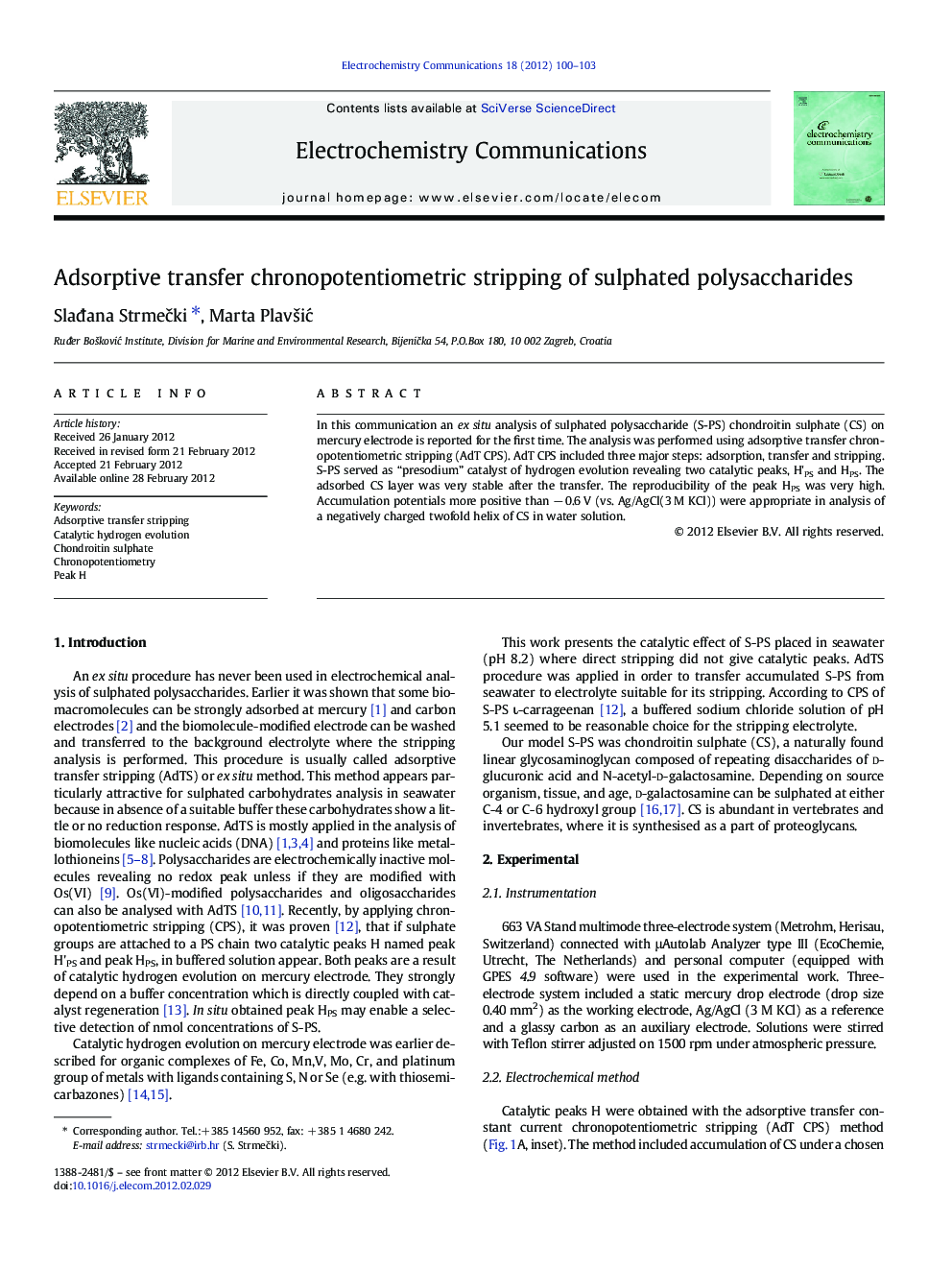| Article ID | Journal | Published Year | Pages | File Type |
|---|---|---|---|---|
| 179831 | Electrochemistry Communications | 2012 | 4 Pages |
In this communication an ex situ analysis of sulphated polysaccharide (S-PS) chondroitin sulphate (CS) on mercury electrode is reported for the first time. The analysis was performed using adsorptive transfer chronopotentiometric stripping (AdT CPS). AdT CPS included three major steps: adsorption, transfer and stripping. S-PS served as “presodium” catalyst of hydrogen evolution revealing two catalytic peaks, H'PS and HPS. The adsorbed CS layer was very stable after the transfer. The reproducibility of the peak HPS was very high. Accumulation potentials more positive than − 0.6 V (vs. Ag/AgCl(3 M KCl)) were appropriate in analysis of a negatively charged twofold helix of CS in water solution.
Graphical abstractFigure optionsDownload full-size imageDownload as PowerPoint slideHighlights► An ex situ technique enabled analysis of sulphated polysaccharide in seawater. ► Sulphated polysaccharide was a “presodium” catalyst of hydrogen evolution. ► Adsorptive transfer chronopotentiometric stripping displayed peaks H'PS and HPS. ► The adsorbed layer of sulphated polysaccharide was very stable after the transfer. ► Detection limit in the range of pmol dm-3 was calculated.
